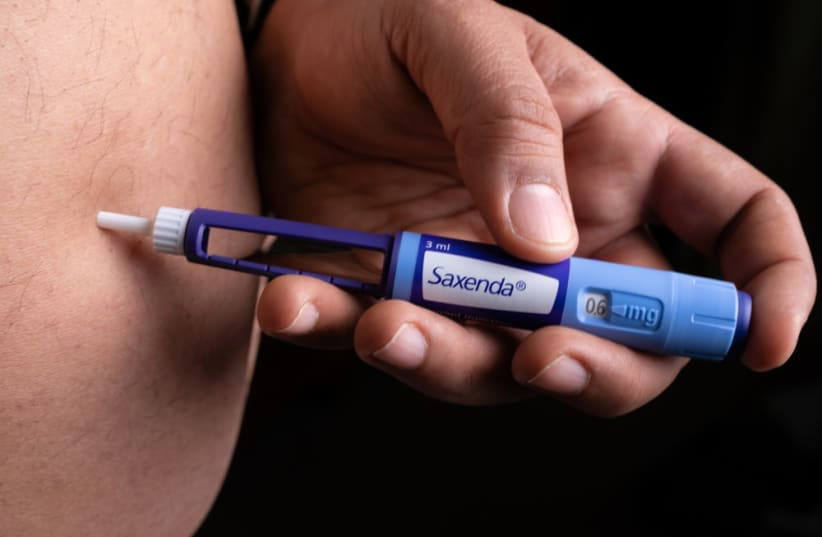Obesity and excess weight are growing health concerns worldwide, including in Pakistan. For those seeking effective medical assistance for weight management, Saxenda Injection in Islamabad has become a popular option. Saxenda is a prescription medication that aids weight loss by suppressing appetite and improving metabolic control. This article explores what Saxenda is, how it works, its benefits and risks, and important questions you should ask your doctor before starting this treatment.
What is Saxenda?
Saxenda is a brand name for liraglutide, a glucagon-like peptide-1 (GLP-1) receptor agonist. It was originally developed for diabetes treatment but was later approved for weight management due to its appetite-suppressing effects. Saxenda works by mimicking hormones that regulate hunger and food intake, helping patients reduce calorie consumption without feeling overly hungry.
How Does Saxenda Work?
Saxenda targets areas of the brain that regulate appetite. When injected daily, it signals the brain to feel full faster and reduces hunger cravings. It also slows stomach emptying, which helps you feel satiated for longer after eating. These mechanisms contribute to a gradual but sustained reduction in body weight when combined with a healthy diet and exercise.
Why Choose Saxenda Injection in Islamabad?
In Islamabad, access to quality healthcare and medical weight loss options is improving. Saxenda injections are available at reputable clinics that offer professional supervision throughout the treatment. Choosing Saxenda Injection in Islamabad ensures you receive genuine medication, proper dosage, and guidance tailored to your health profile.
Benefits of Saxenda for Weight Loss
-
Clinically Proven Results: Clinical trials show patients can lose an average of 5-10% of their body weight within 12 weeks.
-
Improved Blood Sugar Control: Especially beneficial for patients with prediabetes or type 2 diabetes.
-
Appetite Control: Helps reduce binge eating and emotional eating.
-
Increased Energy: Weight loss can improve energy levels and overall well-being.
Who is a Candidate for Saxenda?
Saxenda is generally prescribed to adults with a Body Mass Index (BMI) of 30 or more (obese) or those with a BMI of 27 or more with at least one weight-related health condition like hypertension, diabetes, or high cholesterol.
Questions to Ask Your Doctor Before Starting Saxenda
Before beginning Saxenda treatment, it’s crucial to have a clear understanding of what to expect and whether this medication is right for you. Here are some essential questions to discuss with your healthcare provider:
-
Am I a suitable candidate for Saxenda?
Understanding if your medical history and current health conditions make you eligible. -
How should I administer the injection?
Clarifying the injection technique, dosage schedule, and storage of the medication. -
What are the possible side effects?
Knowing the common and severe side effects helps you prepare and identify warning signs. -
How will Saxenda interact with my current medications?
Important to prevent any adverse drug interactions. -
How long will I need to use Saxenda?
Discuss the expected duration of treatment and when to evaluate effectiveness. -
Can I use Saxenda during pregnancy or breastfeeding?
Critical for women in reproductive age to ensure safety. -
What lifestyle changes should accompany the treatment?
Saxenda works best with diet and exercise; ask for guidance on lifestyle adjustments. -
What happens if I miss a dose?
Instructions on managing missed doses to maintain effectiveness. -
How will my progress be monitored?
Regular check-ups and what parameters will be tracked. -
Are there any costs or insurance coverage details I should know?
Understanding financial aspects helps in planning treatment.
How to Use Saxenda Injection
Saxenda is administered once daily via subcutaneous injection (under the skin), typically in the abdomen, thigh, or upper arm. It comes in a prefilled pen, making it user-friendly. Your healthcare provider will instruct you on proper technique and dosage escalation, starting low and gradually increasing to minimize side effects.
Common Side Effects of Saxenda
While many users tolerate Saxenda well, some may experience side effects including:
-
Nausea or vomiting
-
Diarrhea or constipation
-
Headache
-
Dizziness
-
Injection site reactions (redness, swelling)
Most side effects lessen over time as your body adjusts to the medication. However, any severe or persistent symptoms should be reported immediately.
Saxenda Injection vs Exercise Alone: What Works Better?
While Saxenda can significantly aid weight loss, it’s essential to combine it with lifestyle changes such as regular exercise and a healthy diet. Exercise alone promotes calorie burning and improves cardiovascular health, but many struggle to achieve sufficient weight loss through exercise only. Saxenda helps reduce appetite, making adherence to a calorie-restricted diet easier.
Studies have shown that patients using Saxenda in combination with exercise lose more weight and keep it off longer compared to those relying on exercise alone. However, Saxenda is not a substitute for physical activity but rather a complementary tool.
Maintaining Weight Loss After Saxenda
Weight maintenance after Saxenda treatment requires ongoing lifestyle management. Once you stop the medication, appetite may return to previous levels, so continuing healthy eating habits and regular exercise is vital. Some patients may use Saxenda intermittently under medical supervision to sustain their weight.
Where to Get Saxenda Injection in Islamabad?
If you are considering Saxenda, it’s important to choose a reputable clinic for treatment. Clinics that specialize in cosmetic injectables and medical weight loss provide safe administration and follow-up care. You can learn more and consult specialists at clinics offering Saxenda Injection in Islamabad.
Final Thoughts
Saxenda Injection in Islamabad offers a promising solution for those struggling with obesity and related health conditions. When used responsibly and under professional guidance, it can accelerate weight loss and improve overall health. Remember to have an open dialogue with your healthcare provider and understand all aspects of the treatment before starting.
